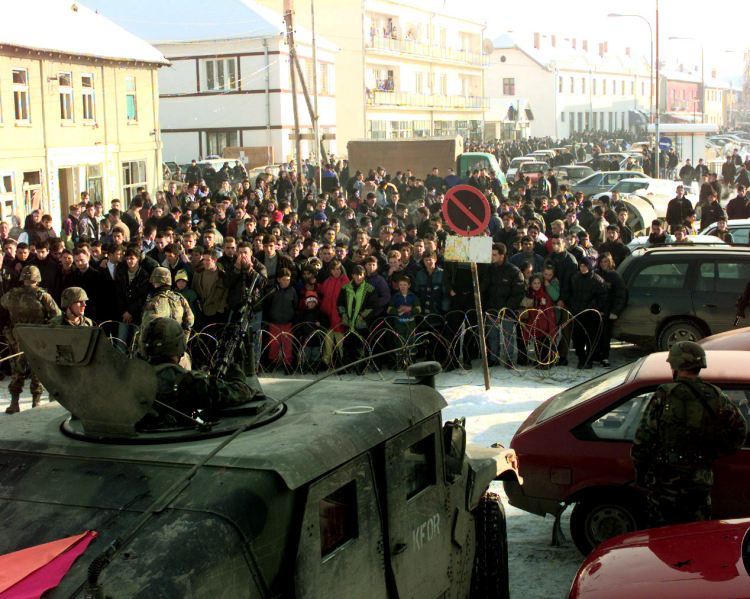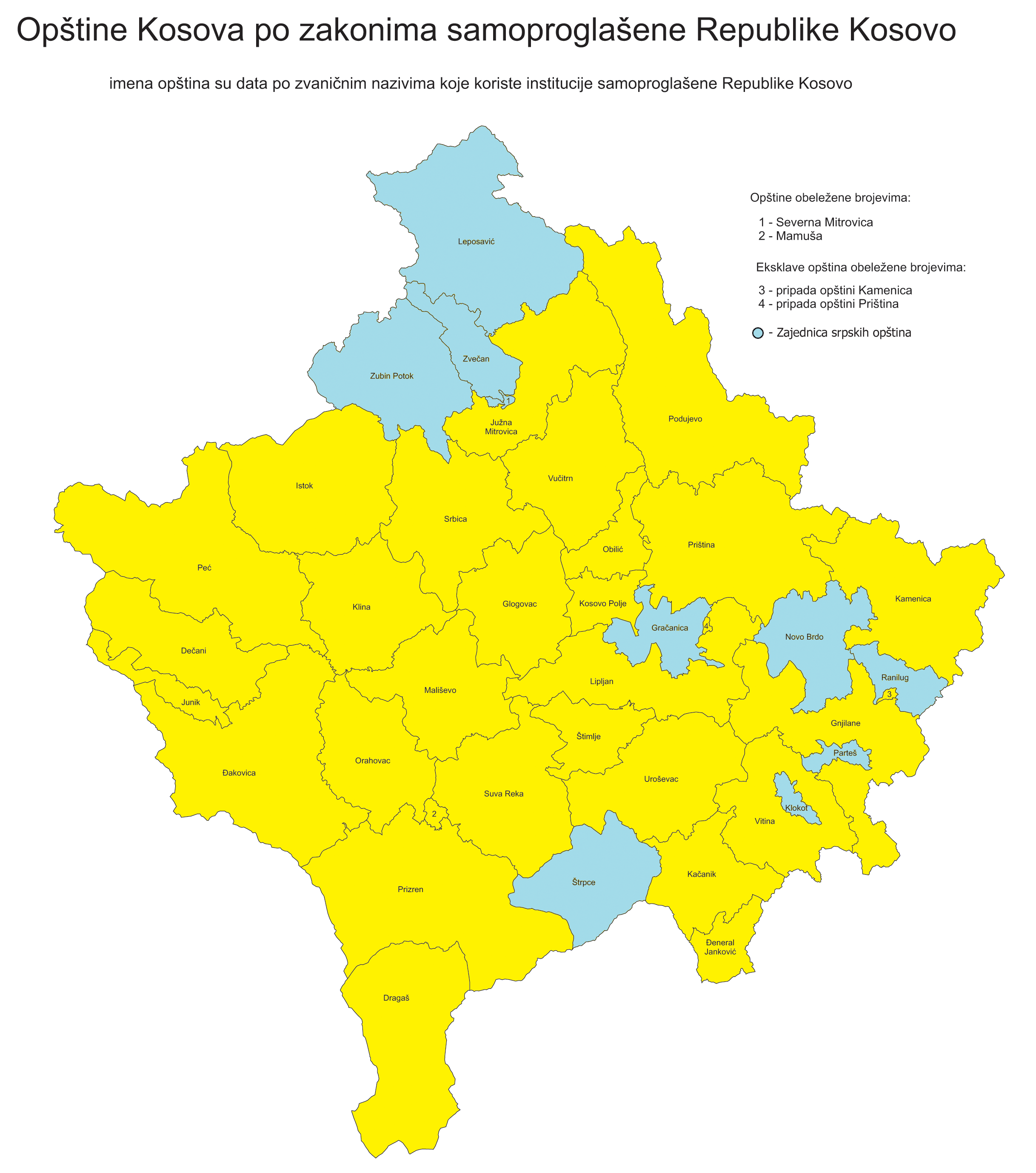|
Vërban
Vërban (; ) is a village in the municipality of Viti, Kosovo. As of 2024, the village has a population of 1,549 inhabitants. History The village of Vërban holds significant archaeological importance. Traces of the Vërban archaeological site show us about a settlement during the Roman times. In the village, in an accidental archaeological discovery is a sculpture found, a masterpiece of the Dardanian art, a reflection of an advanced artistic creation of the indigenous Dardani population. The Dea Dardanica () is sculptured in qualitative marble, and reflects a figure of a high-toned Dardanian lady. See also * Roman heritage in Kosovo The Roman heritage sites in Kosovo represent a multitude of monuments of material and spiritual culture, which reflect the Roman period in this region. Among them, a special place is occupied by those that represent the development of art, such as ... References Villages in Viti, Kosovo {{Kosovo-geo-stub ... [...More Info...] [...Related Items...] OR: [Wikipedia] [Google] [Baidu] |
Kosovo
Kosovo, officially the Republic of Kosovo, is a landlocked country in Southeast Europe with International recognition of Kosovo, partial diplomatic recognition. It is bordered by Albania to the southwest, Montenegro to the west, Serbia to the north and east, and North Macedonia to the southeast. It covers an area of and has a population of approximately 1.6 million. Kosovo has a varied terrain, with high plains along with rolling hills and List of mountains in Kosovo, mountains, some of which have an altitude over . Its climate is mainly Continental climate, continental with some Mediterranean climate, Mediterranean and Alpine climate, alpine influences. Kosovo's capital and List of cities and towns in Kosovo#List, most populous city is Pristina; other major cities and urban areas include Prizren, Ferizaj, Gjilan and Peja. Kosovo formed the core territory of the Dardani, an ancient Paleo-Balkanic languages, Paleo-Balkanic people attested in classical sources from the 4th cent ... [...More Info...] [...Related Items...] OR: [Wikipedia] [Google] [Baidu] |
Vërban Archaeological Site
:''Part of a series of articles upon Archaeology of Kosovo'' The Vërban archaeological site, is an archaeological site in the village of Vërban, Viti, Kosovo. Milot Berisha, ''Kosovo Archaeological Guide'',Prishtinë, Kosovo Archaeological Institute and Ministry of Culture, Youth and Sports, 2012, Pg.67. See also * Roman Dardania * Roman cities in Illyria *Archaeology of Kosovo *Roman Period Sites in Kosovo *Neolithic Sites in Kosovo *Copper, Bronze and Iron Age Sites in Kosovo *Late Antiquity and Medieval Sites in Kosovo ''Part of series of articles upon Archaeology of Kosovo'' Late Antiquity in Kosovo brings different currents of change that reverberate and affect it as well as the whole extent of the Roman Empire. It starts at the time of Constantine the Great, ... References {{DEFAULTSORT:Kllokot-Verban (archaeological site) Illyrian Kosovo Archaeology of Illyria Moesia Archaeological sites in Kosovo Dardanians Dardania (Roman province) Roman towns and ... [...More Info...] [...Related Items...] OR: [Wikipedia] [Google] [Baidu] |
Viti, Kosovo
Viti ( sq-definite, Vitia) or Vitina ( sr-Cyrl, Витина) is a town and municipality located in the District of Gjilan in Kosovo. According to the 2011 census, the town of Viti has 4,924 inhabitants, while the municipality has 46,987 inhabitants. Geography The town of Viti and the southern part of the Municipality lies on the foothills of the Skopska Crna Gora Mountains. History Ottoman period The municipality has several settlements historically inhabited by the Laramans, crypto-Catholics. Kosovo War and aftermath During the Kosovo War 16 KLA soldiers, as well as 5 Serb soldiers and policemen were killed in Viti. The entire fighting happened in 1999 and in the southern part of the municipality, near the Karadak Mountains, in villages such as Lubishtë, Gjylekare, Mogillë, Smirë, Kabash and Dëbëlldeh. During and after the Kosovo War 76 civilians were killed, 38 Albanians and 38 Serbs. Following the 1999 Kosovo War, it was the home of A Company, 2/505 Parach ... [...More Info...] [...Related Items...] OR: [Wikipedia] [Google] [Baidu] |
Vitina Municipality
Viti ( sq-definite, Vitia) or Vitina ( sr-Cyrl, Витина) is a List of cities in Kosovo, town and Municipalities of Kosovo, municipality located in the District of Gjilan in Kosovo. According to the 2011 census, the town of Viti has 4,924 inhabitants, while the municipality has 46,987 inhabitants. Geography The town of Viti and the southern part of the Municipality lies on the foothills of the Skopska Crna Gora, Skopska Crna Gora Mountains. History Ottoman period The municipality has several settlements historically inhabited by the Laramans, crypto-Catholics. Kosovo War and aftermath During the Kosovo War 16 KLA soldiers, as well as 5 Serb soldiers and policemen were killed in Viti. The entire fighting happened in 1999 and in the southern part of the municipality, near the Skopska Crna Gora, Karadak Mountains, in villages such as Lubishtë, Gjylekar, Gjylekare, Mogillë, Smirë, Kabash and Dëbëlldeh. During and after the Kosovo War 76 civilians were killed, 38 Albani ... [...More Info...] [...Related Items...] OR: [Wikipedia] [Google] [Baidu] |
Dea Dardanica
Dea Dardanica is an archaeological artifact found in Kosovo that represents an ancient deity associated with the Dardania region, located in the central-western Balkans, which encompasses parts of modern Kosovo and western North Macedonia. Overview Dea Dardanica holds significance within the historical and cultural context of the Dardania region. While the exact nature of her worship and beliefs surrounding her vary, she is generally understood to have been revered by the indigenous Dardanian people. Dea Dardanica is often associated with themes such as protection, fertility, and possibly solar symbolism, although the exact nature of her attributes remains subject to interpretation. Imagery found on archaeological artifacts offers clues to these associations. Our understanding of Dea Dardanica primarily comes from archaeological discoveries, including inscriptions and votive altars, scattered throughout the Dardania region. These artifacts provide valuable evidence of her cul ... [...More Info...] [...Related Items...] OR: [Wikipedia] [Google] [Baidu] |
Districts Of Kosovo
A District ( or ; or , or ) is the highest level of administrative divisions of Kosovo. The districts of Kosovo are based on the 2000 Reform of the United Nations Interim Administration Mission in Kosovo, UNMIK-Administration. UNMIK reform of 2000 The United Nations Interim Administration Mission in Kosovo (United Nations Interim Administration Mission in Kosovo, UNMIK) introduced the following changes to the districts and municipalities of Kosovo (UNMIK) in 2000: * The Kosovska Mitrovica District (Serbia), Kosovska Mitrovica District became the District of Mitrovica. * The Peć District (Serbia), Peć District was split into the District of Peja and the District of Gjakova. ** Additionally, the municipality of Rahovec was transferred to the District of Gjakova. * The Kosovo District was split into the District of Pristina and District of Ferizaj. * The Kosovo-Pomoravlje District was renamed into the District of Gjilan. ** Additionally, it transferred the municipality of Novo Br ... [...More Info...] [...Related Items...] OR: [Wikipedia] [Google] [Baidu] |
District Of Gjilan
The District of Gjilan (; ) is one of the seven Districts of Kosovo, districts (the higher-level administrative divisions) of Kosovo. Its seat is in the city of Gjilan. History Anamorava, literally "side of river of Morava", is the hilly countryside in south eastern Kosovo south of Gjilan and on the Binačka Morava. It stretches eastward to the Preševo (Presheva) valley in southern Serbia. The mountains in this region rise to an altitude of 1,000 to 1,200 meters, and culminate in the Skopska Crna Gora, Skopska Crna Gora region bordering neighboring North Macedonia north of Skopje. Municipalities The district of Gjilan has a total of 6 municipalities and 287 other smaller settlements: Ethnic groups In 1991, all municipalities of the district had an Albanians in Kosovo, Albanian majority: Gjilan (76.54%), Kamenica, Kosovo, Kamenica (73.05%), Viti, Kosovo, Viti (78.68%). In the 2011 census, after the creation of new municipalities with Serb population, Albanians are the ma ... [...More Info...] [...Related Items...] OR: [Wikipedia] [Google] [Baidu] |
Municipalities Of Kosovo
A municipality (; ) is the basic administrative division in Kosovo and constitutes the only level of power in local governance. There are 38 municipalities in Kosovo; 27 of which have an Kosovo Albanians, Albanian ethnic majority, 10 Kosovo Serbs, Serb and Mamusha, 1 Turks in Kosovo, Turkish. After the Brussels Agreement (2013), 2013 Brussels Agreement, signed by the governments of Government of Kosovo, Kosovo and Government of Serbia, Serbia, an agreement was made to create a Community of Serb Municipalities, which would operate within Kosovo's legal framework. Since 2013, the agreement has not been fulfilled by Kosovo's authorities, calling upon its Constitution of Kosovo, constitution and territorial integrity. List of municipalities Powers of municipalities All municipalities have the following competences, as regulated by Law Nr. 03/L-040 of the Constitution of Kosovo: # Local economic development. # Urban and rural planning. # Land use and development. # Implementation ... [...More Info...] [...Related Items...] OR: [Wikipedia] [Google] [Baidu] |
Central European Time
Central European Time (CET) is a standard time of Central, and parts of Western Europe, which is one hour ahead of Coordinated Universal Time (UTC). The UTC offset, time offset from UTC can be written as UTC+01:00. It is used in most parts of Europe and in several African countries. CET is also known as Middle European Time (MET, German: :de:Mitteleuropäische Zeit, MEZ) and by colloquial names such as Amsterdam Time, Berlin Time, Brussels Time, Budapest Time, Madrid Time, Paris Time, Stockholm Time, Rome Time, Prague time, Warsaw Time or Romance Standard Time (RST). The 15th meridian east is the central axis per UTC+01:00 in the world system of time zones. As of 2023, all member state of the European Union, member states of the European Union observe summer time (daylight saving time), from the last Sunday in March to the last Sunday in October. States within the CET area switch to Central European Summer Time (CEST, UTC+02:00) for the summer. The next change to CET is scheduled ... [...More Info...] [...Related Items...] OR: [Wikipedia] [Google] [Baidu] |
Central European Summer Time
Central European Summer Time (CEST, UTC+02:00), sometimes referred to as Central European Daylight Time (CEDT), is the standard clock time observed during the period of summer daylight-saving in those European countries which observe Central European Time (CET; UTC+01:00) during the other part of the year. It corresponds to UTC+02:00, which makes it the same as Eastern European Time, Central Africa Time, South African Standard Time, Egypt Standard Time and Kaliningrad Time in Russia. Names Other names which have been applied to Central European Summer Time are Middle European Summer Time (MEST), Central European Daylight Saving Time (CEDT), and Bravo Time (after the second letter of the NATO phonetic alphabet). Period of observation Since 1996, European Summer Time has been observed between 01:00 UTC (02:00 CET and 03:00 CEST) on the last Sunday of March, and 01:00 UTC on the last Sunday of October; previously the rules were not uniform across the European Union. The ... [...More Info...] [...Related Items...] OR: [Wikipedia] [Google] [Baidu] |
Ancient Rome
In modern historiography, ancient Rome is the Roman people, Roman civilisation from the founding of Rome, founding of the Italian city of Rome in the 8th century BC to the Fall of the Western Roman Empire, collapse of the Western Roman Empire in the 5th century AD. It encompasses the Roman Kingdom (753–509 BC), the Roman Republic (50927 BC), and the Roman Empire (27 BC476 AD) until the fall of the western empire. Ancient Rome began as an Italic peoples, Italic settlement, traditionally dated to 753 BC, beside the River Tiber in the Italian peninsula. The settlement grew into the city and polity of Rome, and came to control its neighbours through a combination of treaties and military strength. It eventually controlled the Italian Peninsula, assimilating the Greece, Greek culture of southern Italy (Magna Graecia) and the Etruscans, Etruscan culture, and then became the dominant power in the Mediterranean region and parts of Europe. At its hei ... [...More Info...] [...Related Items...] OR: [Wikipedia] [Google] [Baidu] |




